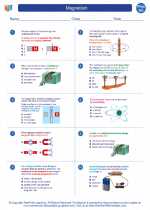Polyester: Properties and Uses
Chemical Structure
Polyester is a long-chain synthetic polymer composed of ester functional groups in the main chain. The repeating units of the polymer are linked by ester groups, which give polyester its characteristic properties.
Properties
- Durability: Polyester is a durable material, resistant to stretching and shrinking, making it ideal for clothing that requires frequent washing and wearing.
- Wrinkle Resistance: Polyester fabrics are known for their ability to retain their shape and resist wrinkles, making them low-maintenance and easy to care for.
- Moisture Wicking: Some types of polyester are designed to wick moisture away from the skin, making them suitable for sportswear and outdoor clothing.
- Color Retention: Polyester fabrics hold dye well, resulting in vibrant and long-lasting colors.
- Thermal Stability: Polyester has good thermal stability, making it suitable for a wide range of temperature conditions.
Uses
Polyester is used in a variety of applications, including:
- Apparel: Clothing such as shirts, pants, dresses, and outerwear
- Home Textiles: Bedding, curtains, upholstery, and carpets
- Industrial Applications: Ropes, conveyor belts, and insulating materials
- Packaging: Polyester films and containers
Environmental Impact
While polyester has many desirable properties, it is important to consider its environmental impact. The production of polyester involves the use of petrochemicals, and the material is not biodegradable. However, efforts are being made to develop sustainable alternatives, such as recycled polyester made from post-consumer plastic bottles.
Study Tips
Understanding the Chemical Structure
When studying polyester, it's essential to understand the chemical structure of the polymer, including the arrangement of ester functional groups in the main chain. Visual aids such as molecular models or diagrams can be helpful in visualizing the structure.
Comparing Properties with Natural Fibers
Compare the properties of polyester with those of natural fibers such as cotton, wool, and silk. Consider how the properties of polyester make it suitable for specific applications and how it differs from natural fibers.
Environmental Considerations
Research the environmental impact of polyester production and explore sustainable alternatives. Consider the life cycle of polyester products and how they can be recycled or repurposed to reduce environmental impact.
Practical Applications
Look for examples of polyester in everyday products and consider how its properties contribute to their functionality and performance. Discuss the advantages and limitations of using polyester in different applications.
.


